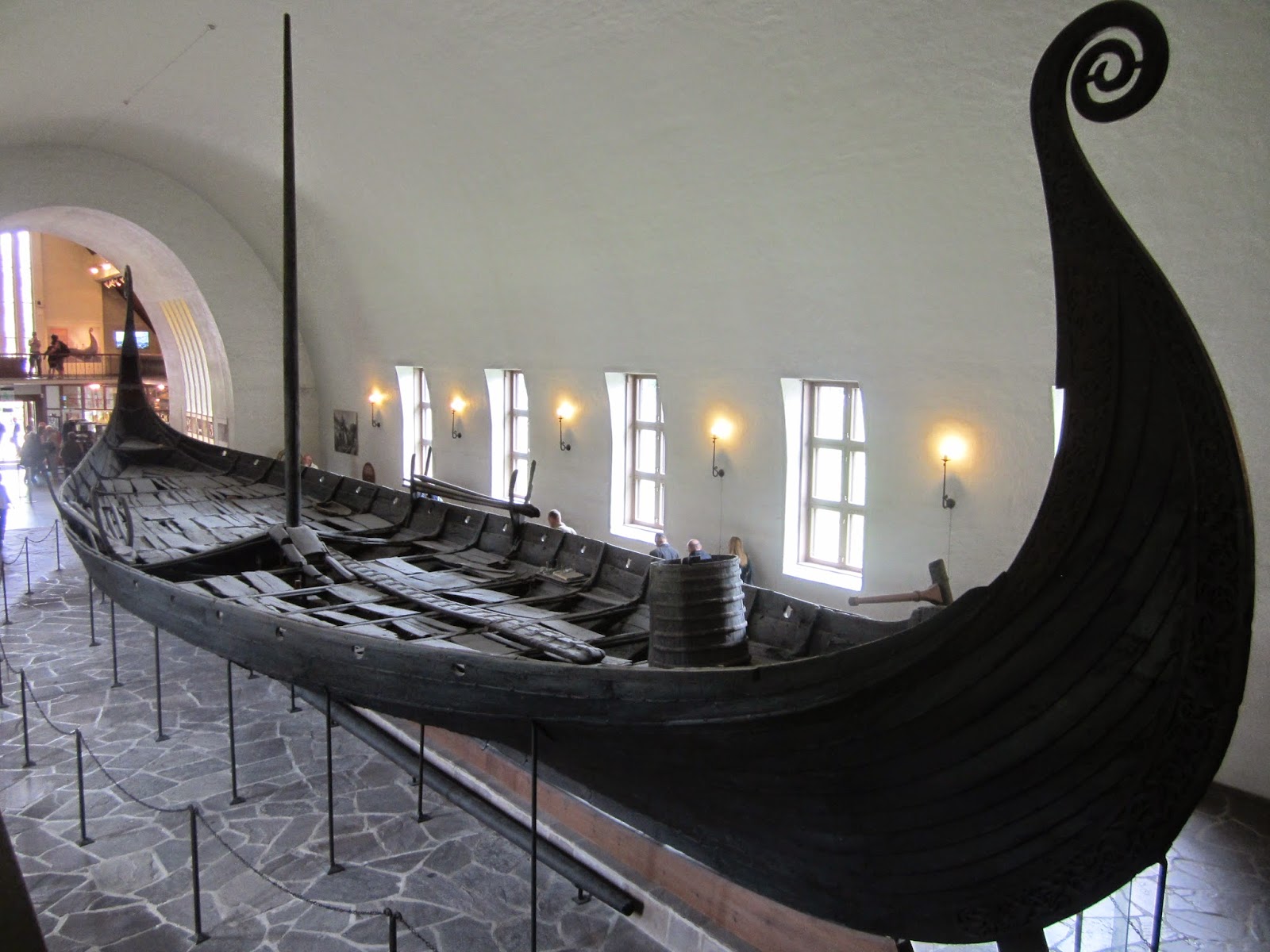Osberg Viking ship built ca 800-820 AD
Parts of the ship date from around 800-820 but the grave itself has been dated 834. Built almost entirely of oak it measures approximately 71 feet long (21.58 meters) and 16 feet wide (5.10 meters). Thirty people rowed the ship placed in two lines of 15 oars each. The design of this ship suggests that it was used for coastal voyages rather than ocean travel.
The postcard below shows a photo taken in 1904 with some of the fine carved detail work on the ship.
Detail of carving on the Osberg ship
Gokstad ship built ca 890 AD
Tune ship built ca 900 AD
The third ship seen above is called the Tune ship and was built around
900. It is not in as good condition as the other two. It measures 72
feet long and 14.3 feet wide. with 11 or 12 pairs of oars. This ship was a fast ocean going vessel. It was found
in a boat burial mound at Haugen farm in Rolsvøy in Tune, Østfold and
excavated by the archeologist Oluf Rygh in 1867. All three ships used sails in addition to oars.
We had just one day in Oslo so we knew it would only be possible to see a limited numbered of things. Since both the Folk Museum and the Viking Ship Museum, which we wanted very much to visit, were located on Bygdøy and the trip over to the island would also give us a nice sightseeing boat ride that made the decision easy. If we had more time when we returned we could chose something else closer to our hotel.
Here below are a few pictures from our visit to the Viking Ship Museum. When I visited here in the 1980s it was forbidden to take flash pictures. Now with the newer digital cameras that do not need so much light it is possible to get good pictures even without flash.
We had just one day in Oslo so we knew it would only be possible to see a limited numbered of things. Since both the Folk Museum and the Viking Ship Museum, which we wanted very much to visit, were located on Bygdøy and the trip over to the island would also give us a nice sightseeing boat ride that made the decision easy. If we had more time when we returned we could chose something else closer to our hotel.
Here below are a few pictures from our visit to the Viking Ship Museum. When I visited here in the 1980s it was forbidden to take flash pictures. Now with the newer digital cameras that do not need so much light it is possible to get good pictures even without flash.
The three photos above are of the Osberg ship.
Gokstad ship
One of three elaborate sleds found with the Osberg ship
Animal-head post
These two smaller boats, lifeboats or tenders, are from the Gokstad grave. A portion of the wooden burial chamber is at the left side.
For additional information, please see:
http://en.wikipedia.org/wiki/Oseberg_Ship
http://en.wikipedia.org/wiki/Viking_Ship_Museum_%28Oslo%29
http://en.wikipedia.org/wiki/Gokstad_ship
http://en.wikipedia.org/wiki/Tune_ship











No comments:
Post a Comment